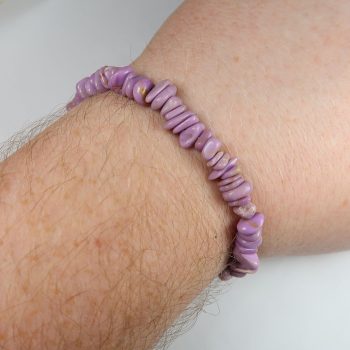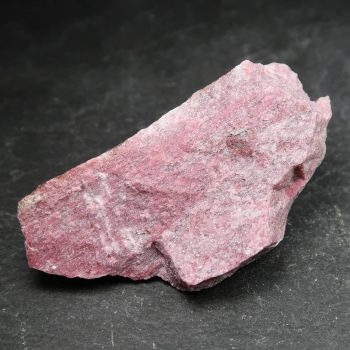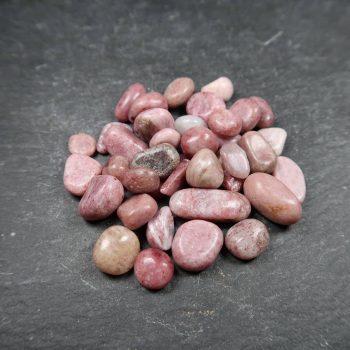Thulite
Thulite is a pink Zoisite mineral, mostly found in Norway.
It makes a nice decorative piece and is often sold polished. It has also been found in Austria and the USA, but the Norwegian locales are the most plentiful.
Showing all 3 results
-

Thulite bracelets
£4.95 -

Thulite specimens
Price range: £1.50 through £8.00 -

Thulite tumblestones
£2.50
Appearance, Uses and History
Thulite was named after the island of Thule, an unidentified island named several times throughout history.
Thulite is pretty much exclusively used as a decorative material for carving, or a gemstone cut into beads or cabochons. It is a mottled pink, red and white mineral, and is almost always sold polished to show off the colours nicely.
Locales
Thulite is only found in a few locations worldwide, two locations in Norway, two locations in the USA, and one locale in Austria.
Mineralogy
Hazards and Warnings
Almost all rocks, minerals (and, frankly, almost all other substances on earth) can produce toxic dust when cutting, which can cause serious respiratory conditions including silicosis.
When cutting or polishing rocks, minerals, shells, etc, all work should be done wet to minimise the dust, and a suitable respirator or extraction system should be used.
Translations
Arabic:
- الثوليت
Hindi:
Portuguese:
Bengali:
Indonesian:
Punjabi:
English:
- thulite
- rosaline
Italian:
Russian:
- тулит
French:
Japanese:
- チューライト
Spanish:
German:
- Thulit
Korean:
Thai:
Gujurati:
Mandarin and Traditional Chinese:
Urdu:
